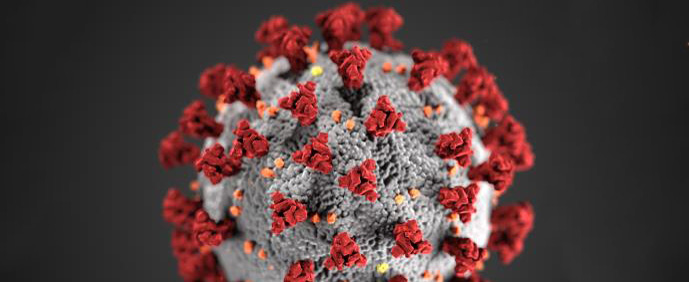The ADHD – Diet Connection
Attention-Deficit Hyperactivity Disorder (ADHD): two generations ago ADHD was defined as an abnormal defect of moral control in otherwise high functioning children. Today we know better. And we know more. Lots more.
What is ADHD?
Today, ADHD is viewed as a multifaceted condition triggered by varying behavioral, biological and environmental factors, including certain foods and food additives. The hallmarks of ADHD are an inability to focus and/or impulsivity that is not developmentally typical for a child’s age. Symptoms fall on a spectrum from predominantly inattentive on one end to predominantly hyperactive at the other end. Certain criteria must be met for a doctor to diagnose a child as having ADHD.
The Role of Food in ADHD
While there are many ways to use “food as medicine,” for some children, food and its additives can actually trigger ADHD. Because diet plays a crucial role in ADHD, it’s important to examine issues such as food sensitivity, food allergy, and the additives and chemicals associated with food production. There are various tests to determine both food allergy and sensitivity. Dr Fenske can advise you about the most appropriate test and then help with interpretation and treatment.

Artificial food colors (AFCs) are widely used by manufacturers to create visually attractive food products. The FDA certifies, for purity and safety, the use of these dyes. However, the amount certified has risen from 12 mg/capita/d in 1950 to 62 mg/capita/d in 2010.
AFC’s can bond to food or body proteins, which means they can “hide in the body,” avoid detection, and disrupt the immune system. This can have significant immunological consequences that affect gastrointestinal function, auto-immunity and even brain and behavior. For some children, ADHD can be triggered and worsened by synthetic colors, flavors and preservatives.
The Feingold Diet for ADHD
In the 1970’s, Benjamin Feingold, M.D. studied the effect of food chemicals and the role of nutrition in addressing learning disabilities and behavior disorders. He pioneered an elimination diet that removed food dyes from the diets of children. Over the years, Dr. Feingold extended the elimination diet to include petrochemical preservatives BHA and BHT. He has reported rates of 30-70% improvement in children with ADHD, depending on the diagnostic criteria used and adherence to the diet.
Over the decades, studies in Europe and the U.S. have tested the Feingold and similar diets. While research has not established a direct cause-and-effect, the evidence indicates restriction/elimination diets have value and can bring about a change in behavior if properly followed. In response to concerns that children will dislike the Feingold Diet, families can find a wide range of tips for adjusting recipes and food selection, making it easy to incorporate changes and still enjoy favorite foods
In addition to eliminating AFCs, BHA, BHT and food allergens/intolerances, additional support may be needed for some children. This may include educational adjustments, behavior modification or counseling, nutrition supplements, and additional dietary changes. Like any medical or behavioral intervention, treatment benefits will vary based on many factors, such as when a child is diagnosed, the ADHD symptoms present, co-occurrence of other immune or medical conditions, and ability to adhere to dietary changes.
As research continues to explore the relationship between diet, food and behavior, we anticipate that many more children – and adults – with ADHD will be helped by the medicinal power of food. If your family struggles with the consequences of ADHD, ask Dr Fenske or another holistic practitioner for suggestions and guidance. You do not need to walk this path alone.
References
[hr]
Quinoa: Supergrain / Superfood
Ancient Inca warriors believed quinoa increased their stamina, so it shouldn’t be surprising that modern-day nutritionists consider it a superfood. While quinoa is actually a seed, it’s prepared and eaten much like rice and other grains. All three types of quinoa — red, black, and white — are essentially equivalent in their nutritional profile and notable health benefits:
Protein-rich Grain. Quinoa contains all nine essential amino acids, the building blocks of muscle tissue and catalysts important to many physiological processes. As a protein-rich grain (8 g. per serving), quinoa is a terrific option for food combining for people following a vegan, vegetarian or gluten-free diet.
 It’s “fibered” up! There’s nearly twice as much fiber in quinoa compared to most other grains. Fiber plays a role in reducing risk factors for heart disease, gastrointestinal disorders, diabetes, and cancer.
It’s “fibered” up! There’s nearly twice as much fiber in quinoa compared to most other grains. Fiber plays a role in reducing risk factors for heart disease, gastrointestinal disorders, diabetes, and cancer.
Energy Boost. Quinoa is high in vitamin B2 (riboflavin), which improves energy metabolism within the brain and muscles cells. It’s also high in manganese, an antioxidant that helps protect cells from damage. Additionally it contains iron, which keeps our red blood cells healthy and carries oxygen throughout the body.
Quinoa is such an easy to grow, tasty super-food, even NASA scientists have been studying it as a possible crop to be grown in outer space. Be sure to give it a try.
References
[hr]
Quinoa Pudding (dairy-free)
Craving rice pudding? This dairy-free alternative pairs the health benefits of gluten-free quinoa with coconut, cinnamon and vanilla. The result is a dish that even the choosiest of kids (or grown-ups) will enjoy for breakfast or as an after-dinner treat.
Ingredients
4 cups of coconut milk (or substitute almond milk)
1 cup of quinoa
1/3 cup of coconut nectar
1 cinnamon stick
1 tsp of vanilla powder (or extract)
Diced or sliced fruit of choice (e.g., berries, apple, pear)
Directions
- Soak the quinoa in lukewarm water for 20 minutes; rinse and drain.
- Combine all ingredients into a medium-sized saucepan and bring to a boil.
- Once boiled, stir and reduce the heat to a low simmer.
- Allow to simmer for 30 minutes, stirring frequently throughout the given time. About 20-25 minutes into simmering, the quinoa will begin to swell and absorb the milk, creating a thick porridge texture.
- When the quinoa has thickened and turned transparent, serve with your favorite fruit.
[hr]
Guiding Principles




